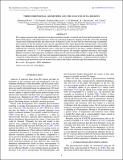Files in this item
Three-dimensional geometries and the analysis of H II regions
Item metadata
| dc.contributor.author | Wood, K. | |
| dc.contributor.author | Barnes, J.E. | |
| dc.contributor.author | Ercolano, B. | |
| dc.contributor.author | Haffner, L.M. | |
| dc.contributor.author | Reynolds, R.J. | |
| dc.contributor.author | Dale, J. | |
| dc.date.accessioned | 2014-05-09T12:01:04Z | |
| dc.date.available | 2014-05-09T12:01:04Z | |
| dc.date.issued | 2013-06-06 | |
| dc.identifier | 117009950 | |
| dc.identifier | a1ad13c6-bee6-47a4-a19f-0ac3b2648212 | |
| dc.identifier | 84878810195 | |
| dc.identifier.citation | Wood , K , Barnes , J E , Ercolano , B , Haffner , L M , Reynolds , R J & Dale , J 2013 , ' Three-dimensional geometries and the analysis of H II regions ' , Astrophysical Journal , vol. 770 , no. 2 , 152 . https://doi.org/10.1088/0004-637X/770/2/152 | en |
| dc.identifier.issn | 0004-637X | |
| dc.identifier.uri | https://hdl.handle.net/10023/4750 | |
| dc.description.abstract | We compare emission line intensities from photoionization models of smooth and fractal shell geometries for low density H II regions, with particular focus on the low-ionization diagnostic diagram [N II]/Hα versus Hα. Building on previously published models and observations of Barnard's Loop, we show that the observed range of intensities and variations in the line intensity ratios may be reproduced with a three-dimensional shell geometry. Our models adopt solar abundances throughout the model nebula, in contrast with previous one-dimensional modeling which suggested the variations in line intensity ratios could only be reproduced if the heavy element abundances were increased by a factor of ∼1.4. For spatially resolved H II regions, the multiple sightlines that pierce and sample different ionization and temperature conditions within smooth and fractal shells produce a range of line intensities that are easily overlooked if only the total integrated intensities from the entire nebula model are computed. Our conclusion is that inference of H II region properties, such as elemental abundances, via photoionization models of one-dimensional geometries must be treated with caution and further tested through three-dimensional modeling. | |
| dc.format.extent | 6 | |
| dc.format.extent | 695509 | |
| dc.language.iso | eng | |
| dc.relation.ispartof | Astrophysical Journal | en |
| dc.subject | H II regions | en |
| dc.subject | ISM: abundances | en |
| dc.subject | QC Physics | en |
| dc.subject.lcc | QC | en |
| dc.title | Three-dimensional geometries and the analysis of H II regions | en |
| dc.type | Journal article | en |
| dc.contributor.sponsor | Science & Technology Facilities Council | en |
| dc.contributor.sponsor | Science & Technology Facilities Council | en |
| dc.contributor.institution | University of St Andrews. University of St Andrews | en |
| dc.contributor.institution | University of St Andrews. School of Physics and Astronomy | en |
| dc.identifier.doi | https://doi.org/10.1088/0004-637X/770/2/152 | |
| dc.description.status | Peer reviewed | en |
| dc.identifier.url | http://www.scopus.com/inward/record.url?eid=2-s2.0-84878810195&partnerID=8YFLogxK | en |
| dc.identifier.grantnumber | ST/J001651/1 | en |
| dc.identifier.grantnumber | PP/F000065/1 | en |
This item appears in the following Collection(s)
Items in the St Andrews Research Repository are protected by copyright, with all rights reserved, unless otherwise indicated.

